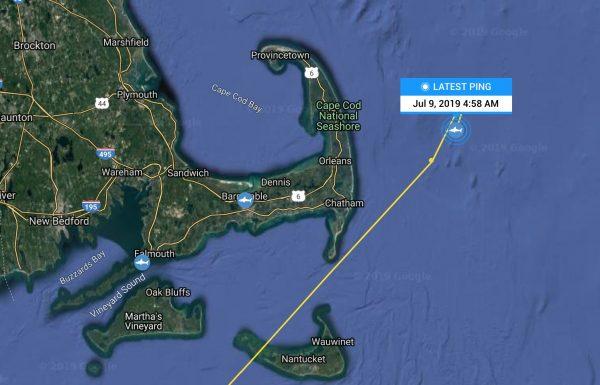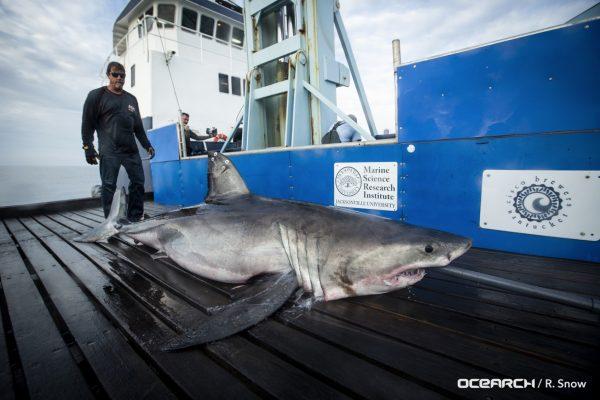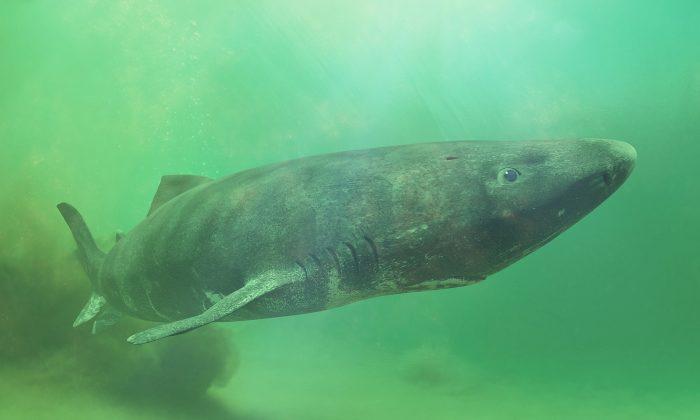A truly massive shark was spotted off the coast of Martha’s Vineyard, Massachusetts, according to recent video footage.
A clip posted to Twitter shows a shark that is at least 20 feet in length.
It’s not clear what kind of shark it is, but according to the person who posted it, “Jaws does exist.”
Other details about the video, including when it was taken, are not clear.
One user wrote that it is a basking shark as the dorsal fin is sticking straight up, whereas great white sharks have a 45-degree angle fin.
Basking sharks are the second-largest shark in the world next to whale sharks. And like whale sharks and megamouth sharks, they eat plankton.
The site adds: “It has a conical snout and large gills. Inside its mouth, this shark has several hook-shaped small teeth. Its liver is about 25 percent of its total body weight and is rich in squalene, a substance that helps the shark to float.”
The moniker “basking” came to be as the shark spends a while feeding under the sun, the website noted.
Great White Pings Near NJ, Cape Cod
Researchers tracking a 10-foot, 800-pound shark off the eastern coast of the United States have announced the massive creature has made its presence known just 15 miles off the coast of Cape Cod by way of a “ping.”

A “ping” happens when a tagged shark’s dorsal fin breaks the surface of the water and transmits a signal, which is noted down for tracking purposes.
The great white has been swimming north for over a month. Earlier on June 28, OCEARCH researchers posted an update on Twitter featuring a map of the great white’s recent movements in eastern coastal waters.
“Today @MissMay_Shark is pinging close to shore a little north of Kitty Hawk North Carolina. She has been making steady progress north since the beginning of the month.”





